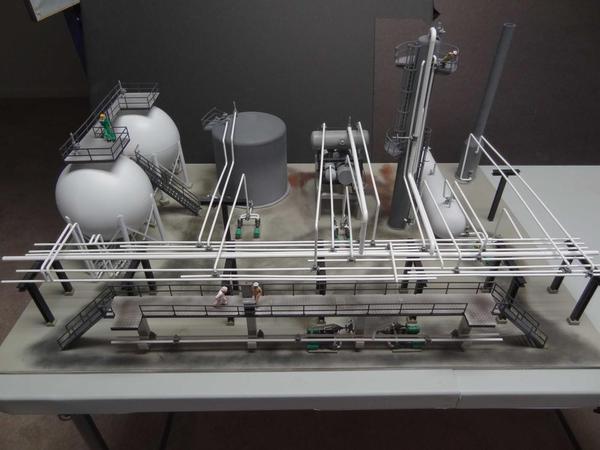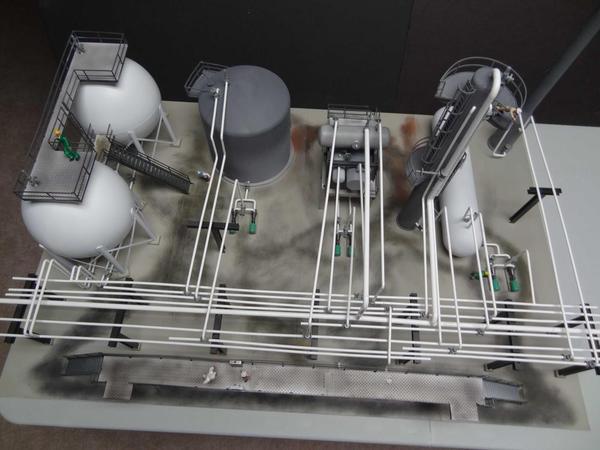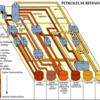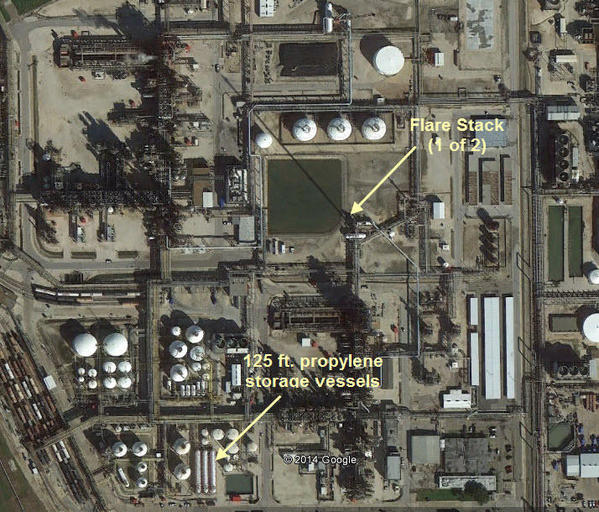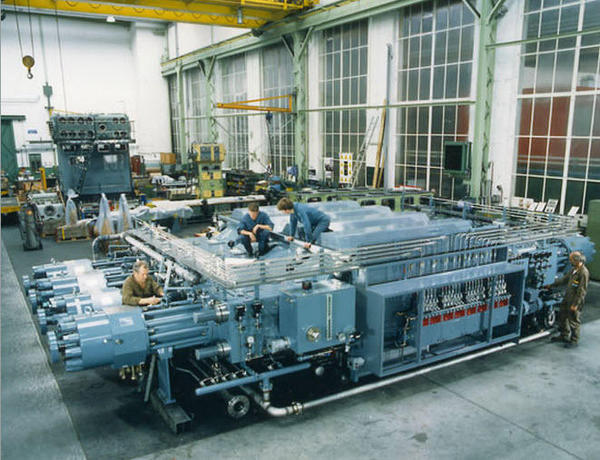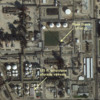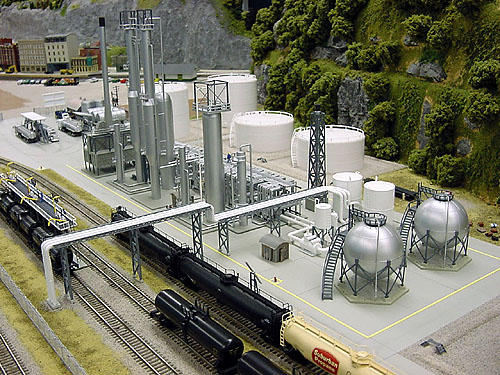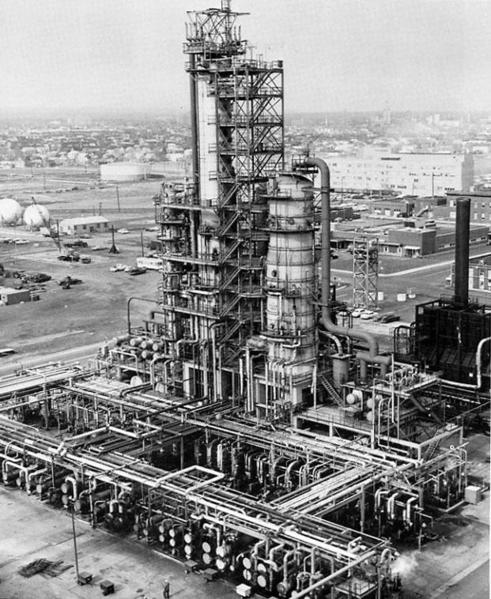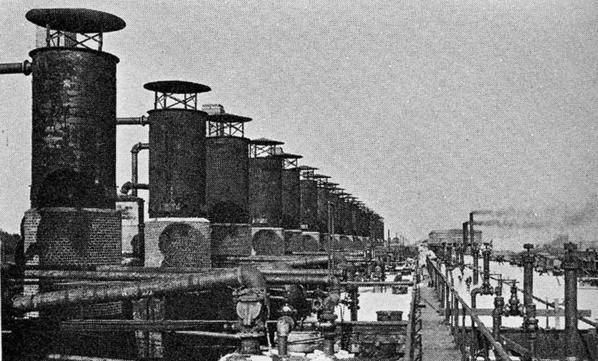Jim:
I am starting a refinery build for a customer in HO scale that incorporates the Plastruct refinery kit so I am looking at the various instructions and drawings as I write.
There are two drawings. One shows the structures and one shows the pipe routing; hopefully your kit has these. Mine are marked PL8A and PL8B. View the pipe routing as an electrical wiring diagram. Circles drawn where pipes meet means they need to be connected. Otherwise the pipes are simply crossing over or under each other.
At both ends of the elevated pipe way where the pipes simply end - just cap them. Whether they are supposed to go somewhere else off diagram I am not sure. Alan Graziano will know better since I believe he helped Plastruct design this kit.
The kit represents a small part of a refinery (production of methanol and propylene).
On the right side are the structures to produce methanol and propylene. You have a distillation tower, dryer, condensers, chillers and a reflux drum.
On the left side the spherical tanks hold the propylene under pressure. The vertical tank holds the methanol.
There are no crude oil storage tanks to start the process. If you have not already purchased maybe instead of two petrochemical kits or in addition to them purchase some storage tanks for crude to start the process. The crude storage tank usually connects to a desalting tank first then to a furnace to heat the crude to temp then to the first distillation tower. Since the desalting tank and furnace are not made by Plastruct you can purchase kit 3027 or kit 3015 for crude storage and connect to the distillation tower (the floating top tank is usually for product not crude but it looks good on a layout).
If you buy two of the refinery kits you can designate the other set of spherical tanks for LNG/propane or another product that needs to be stored under pressure and the vertical tank for another fuel like diesel or jet fuel. You could probably set up the second reflux drum as a desalting tank and the second demethanizer as an alkylation unit to make propane or butane. build up the base for the second dryer and you can make it a furnace. This way you have a crude storage tank feeding a desalting tank then a furnace which you can connect to both distillation towers to start the refining process.
Bottom line with two kits you can have four products - propylene (ie propene), propane/LNG, methanol and a fuel like diesel or jet.
Pipe routing for the kit (simple version) appears to be:
Demethanizer outputs to methanol tank
Dryer outputs to methanol tank
Demethanizer outputs to propylene tanks
The reflux drum appears to output to the propylene tanks through some pumps (Alan can verify this)
All other piping is input/output between the distillation tower, methanizer, drum and dyer. Best place to start pipe routing is at the distillation tower since it is the start of the process.
Good luck
Joe




